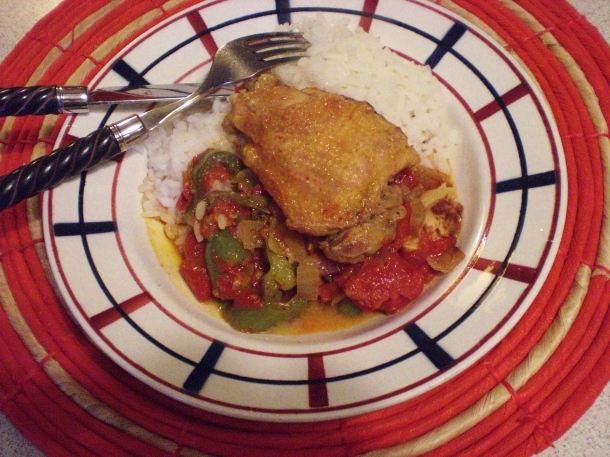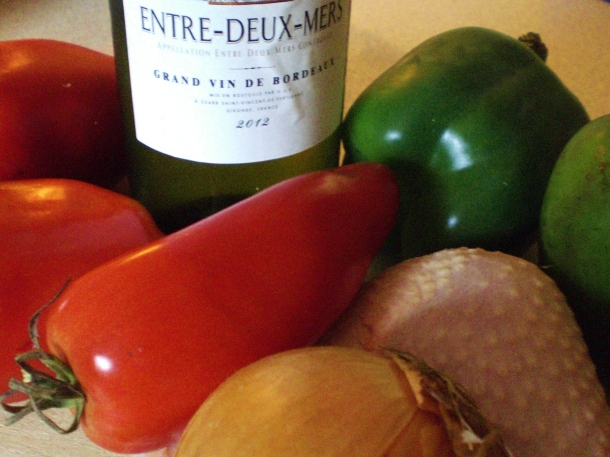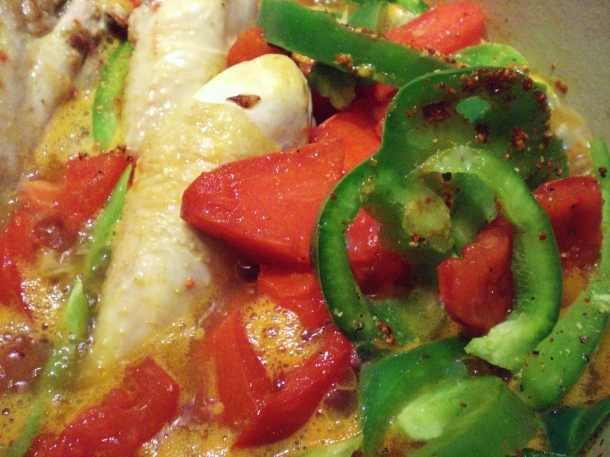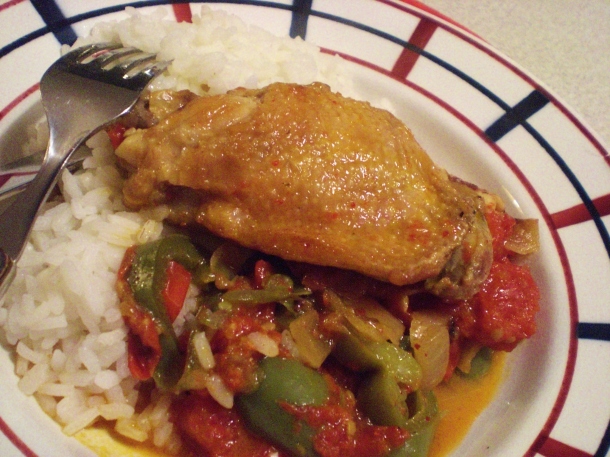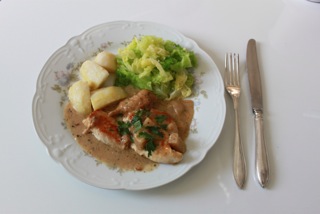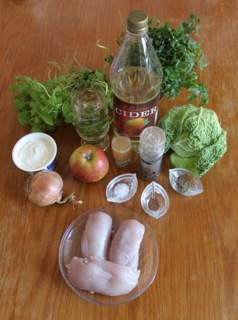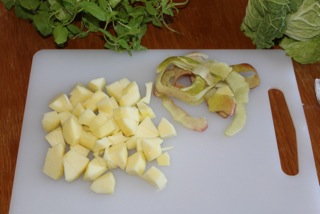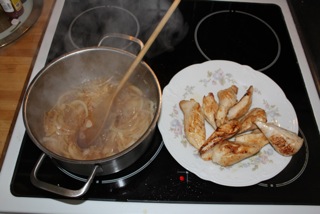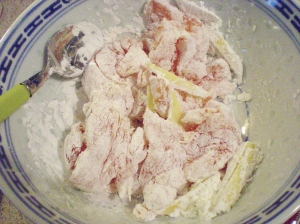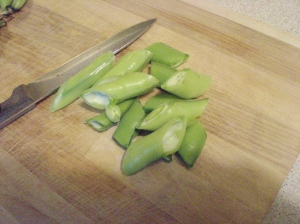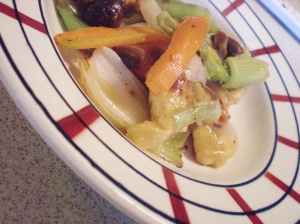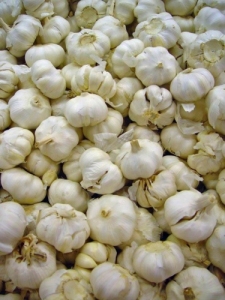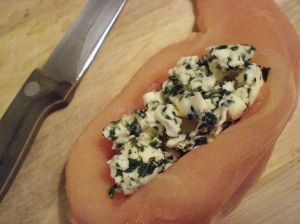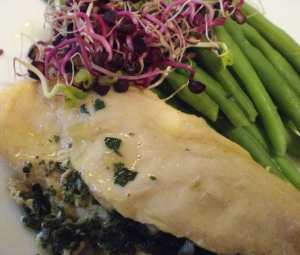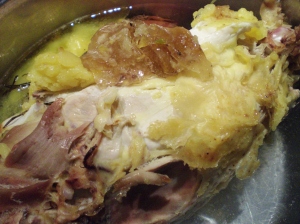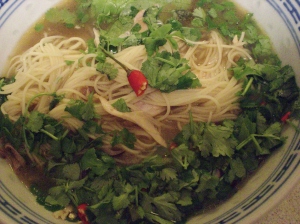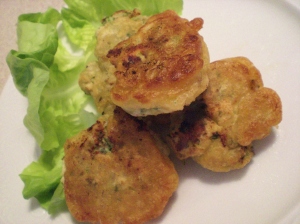One French Word: basquaise, a French recipe : poulet basquaise
Basquaise is a feminine adjective, pronounced bass-kezz and means “from the Pays Basque”.
In fact, it should be “à la basquaise“: chicken in the manner in which it is cooked in the Pays Basque. Like “à la bordelaise” is a dish as it is cooked in and around Bordeaux.
The Pays Basque is situated in the south western corner of France (Biarritz, Bayonne, St Jean de Luz) but also the north western corner of Spain. The Basque people are a cultural and linguistic entity, who have for a long time demanded their autonomy, with some force, from both Spain and France. But I won’t go into politics, it is not the vocation of this blog, and I’m hardly qualified.
“(A la) basquaise” denotes a dish cooked with green bell peppers, tomatoes, onions, garlic and piment d’Espelette. Green and red are traditional Basque colours. Basquaise does NOT include aubergine/eggplant or courgette/zucchini. That would be ratatouille,
something quite different.
Espelette is a village in the Pays Basque where this particular hot pepper is grown. In the autumn, you can see strings of peppers drying on south facing house fronts, before being ground into coarse, fragrant powder for sale. It is the only pepper which has an “appellation d’origine contrôlée” (AOC), which means that any pepper sold as “Espelette” must have been produced there, and only there. It is extremely fashionable at the moment, and rightly so, it is quite delicious and adds a distinctive flavour to any dish. It is easily found anywhere in France. Abroad I don’t know… if you can’t find it, use a pepper which is slightly hot, but very flavoursome. Not simple cayenne, something Mexican maybe?
When I was a very small child, I spent some time with my family on the outskirts of St Jean de Luz, a Basque fishing village, because my Father’s work had taken him there. I remember little, but have retained a love of Basque crockery and table linen, some of which has been handed down to me by my Mother, and which dates back to that time. It is the deep red and navy pattern you see so often in my photos. I have collected it over the years, and have far more than I really need! The only original pieces are four “raviers“ (hors d’oeuvre dishes, often oval) and a table cloth and napkins.
This dish was always a favourite with guests eating at my table d’hôte. It is not difficult to make, but requires fresh, high grade ingredients. Good quality chicken, ripe tomatoes and if possible “old variety” (I used tomates cornues, horned tomatoes, large, long pointed ones).
Ingredients for 2 people with good appetites, or 4 with smaller appetites:
- 2 chicken legs and thighs, separated at the joint, or 4 thigh pieces
- One very large onion, roughly chopped
- 500gr tomatoes, cored and roughly chopped
- One large green bell pepper, cored and sliced into rings (or two if you are fond of bell pepper)
- 2 cloves of garlic, smashed with a cleaver
- 2tbs olive oil
- 1 level tsp piment d’Espelette
- salt, pepper
- 1/4 bottle of dry white wine
Rice to accompany
Preparation:
- Heat the oil in a heavy bottomed saucepan and fry the chicken pieces so that they are golden all over
- Remove the chicken from the pan, and fry the onion, browning it slightly
- Replace the chicken in the pan, together with the tomato, garlic, bell pepper, a tsp sea salt, a few grinds of black pepper and a tsp of piment d’Espelette. Do not stir.
- Add the white wine, and as soon as it looks like boiling, turn down to a simmer.
- After 10 minutes, put water on to boil for the rice, or start getting your rice cooker ready.
- After 20 minutes, stir gently to mix the ingredients top to bottom to cook evenly. Put the rice on.
- Cook for a further 20 minutes. Your rice should be ready. Make a bed of rice, and serve the chicken and the sauce on top of it.
The white wine makes a far finer sauce than chicken stock, water, or chicken cubes. But you cannot really identify the fact that it is white wine. So if you wish to drink red with the dish, you can do so perfectly well. Or the remainder of the bottle which you opened to cook with.
Bon appétit!
